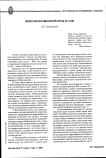Вестник Волгоградского государственного университета. Серия 2: Языкознание @jvolsu-linguistics
Статьи журнала - Вестник Волгоградского государственного университета. Серия 2: Языкознание
Все статьи: 1677
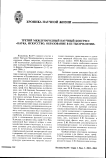
Третий международный научный конгресс «Наука, искусство, образование в III тысячелетии»
Статья
Бесплатно
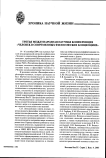
Третья международная научная конференция «Человек в современных философских концепциях»
Статья
Бесплатно
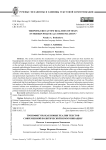
Тропофигуры как новые реалии текстов современной политической коммуникации
Статья научная
В статье рассматриваются механизмы организации вербальных конструктов, манифестирующих лингвопрагматическую устроенность текстов современной российской политической коммуникации. В этой связи выделяется особый класс изобразительных средств политического языка - тропофигуры, к числу которых отнесены ирония и парцелляция, характеризующиеся, с одной стороны, формально-семантической амбивалентностью, с другой - явной идиостилистической окрашенностью. Представленная статья является результатом совместной работы авторов под руководством Н.А. Боженковой, предложившей методологическую концепцию исследования, направленную на вычленение и системную характеризацию категориальных признаков данных синергетических языковых знаков, что позволило описать способы их экземплификации в политических интеракциях. В процессе исследования установлено, что тропофигура иронии (Т.И. Каличкина) и тропофигура парцелляции (А.П. Пантелеева), орнаментально оформляющие антиномию тождественности / нетождественности знака и объекта (семасиологическое несоответствие логико-грамматической организации синтагмы), не только организуют экспрессивно-прагматический центр политической дискурсивной практики, но и являются вербальным маркером когнитивных механизмов текстообразования, которые позволяют партиципанту определенным образом презентовать собственную коммуникативную целеустановку. Показано, что из приемов и средств усиления выразительности тропофигуры иронии и парцелляции преобразуются в маркеры идиоментального процесса и задают иной способ мировосприятия членов социума. Результаты проведенного лингвориторического исследования свидетельствуют о новых механизмах конвергенции / дивергенции смысловых конструктов в различных политических интеракциях и, как следствие, лингвокультурной «переакцентуации» знаково-символических и аксиологических конституентов политического института современного русскоязычного пространства.
Бесплатно
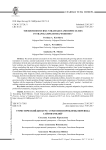
Туристический дискурс: стратегии и проблемы перевода сайтов отелей
Статья научная
Статья посвящена анализу одного из динамичных направлений переводческого бизнеса - переводу в туристической отрасли, а именно письменному переводу сайтов отеля с русского языка на английский и с английского языка на русский. Доказано, что, поскольку интернет является основным источником информации и инструментом формирования туристической аттрактивности, большое внимание в переводе следует уделять языковой составляющей контента гостиничных сайтов. В результате лингвистического анализа установлено, что независимо от направления перевода значительное количество переводов характеризуется нарушением лексических, грамматических, орфографических и пунктуационных норм, что делает текст нечитабельным, не соответствующим своей коммуникативно-прагматической функции. В качестве причин снижения качества переводного контента авторы называют обесценивание труда профессионального переводчика, которому способствуют увеличение количества людей, знающих иностранные языки, и некомпетентное использование ими машинного перевода. Установлено, что переводной текст выполняет свою основную функцию, привлекая потенциальных клиентов, в случае, если профессиональный переводчик придерживается стратегии порождения нового текста с определенными стилистическими маркерами и образными характеристиками, соответствующими иной лингвокультуре, и изменяет форму и структуру оригинального текста.
Бесплатно
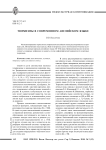
Тюркизмы в современном английском языке
Статья научная
Функционирование тюркизмов в современном английском языке рассматривается на при- мере слов, обозначающих виды одежды, обуви и материалы для их изготовления. В основу иссле- дования легли данные корпусов английского языка XX-XXI веков. Проведенный анализ позволил уточнить словарные дефиниции и выявить случаи орфографической вариантности некоторых тюркизмов.
Бесплатно
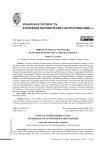
Угроза в социальных сетях: особенности семантики и прагматики
Статья научная
В статье рассматривается угроза как речевой акт и дискурсивная стратегия в социальных сетях. Даются семантические экспликации угрозы, и выделены два основных ее типа: угрозы-наказания и угрозы-предупреждения. Показано, что каждый из типов угроз реализуется в различных коммуникативных ситуациях, что угроза-наказание направлена в прошлое, а угроза-предупреждение - в будущее. Обоснована необходимость различения угроз-наказаний и угроз-предупреждений для судебной лингвистической экспертизы, поскольку различные составы преступлений связаны с различными типами угроз. Охарактеризованы сложности выявления угроз в социальных сетях, и проведен лингвистический анализ угроз: в социальных сетях один и тот же речевой акт угрозы может относиться к различным адресатам, что влияет на его иллокутивную семантику; реализация угроз в дискурсе социальных сетей часто происходит на фоне других речевых актов, сходных по семантике с угрозой; в интернет-коммуникации используются комбинированные тексты, совмещающие изобразительную и собственно вербальную информацию. В статье уточняется категориальный аппарат, использование которого позволяет выявлять и описывать угрозы в ситуациях множественных адресатов речевого акта, в контекстах речевых актов, похожих по иллокутивной семантике на угрозы, а также в случаях дискурсивных стратегий реализации угрозы.
Бесплатно
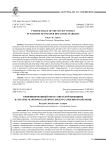
Унифицированный образ советской женщины в системе маркеров газетного дискурса военного времени
Статья научная
В статье на основе метода критического дискурс-анализа исследуются публикации центральных советских газет, посвященные роли женщин в Великой Отечественной войне. Всего к анализу привлечено более 300 номеров за 1941-1943 гг., из которых по ключевым словам и тематической отнесенности отобран материал для изучения. Определен и проанализирован инструментарий создания унифицированного образа женщины - система лексических маркеров. Выявлено, что в советском газетном дискурсе периода Великой Отечественной войны унифицированный образ женщины создавался посредством его идеологизации и милитаризации. Показана его динамика: в публикациях начального этапа войны доминируют маркеры, способствующие созданию образа женщины - труженицы тыла, заменившей мужчину, ушедшего на фронт, в публикациях последующих этапов доминируют маркеры, способствующие созданию образа женщины-солдата, заменившей мужчину, погибшего на поле боя. Установлено, что унифицированный образ представляет собой образ-функцию: он лишен традиционно репрезентируемых в журналистских текстах женских черт. Делается вывод о том, конструирование унифицированного образа-функции осуществлялось исключительно для решения пропагандистских задач, главная из которых - мобилизация женщин на борьбу с врагом, угрожающим самому существованию государства.
Бесплатно
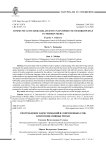
Употребление заимствований в современных СМИ: коммуникативные риски
Статья научная
Статья посвящена проблеме понимания носителями языка новейших заимствований, активно внедряемых в речевую практику средствами массовой информации. Охарактеризованы причины распространения заимствований, особое внимание уделено прагматическим и социально-психологическим факторам, влияющим на этот процесс. На основе результатов проведенного авторами пилотного эксперимента установлено, что значение англицизмов, частотных в современных СМИ, большинство респондентов - носителей русского языка либо не понимают, либо интерпретируют приблизительно, что позволяет говорить об агнонимичности этой лексики. Е.В. Гуляевой разработана концепция исследования, охарактеризован его терминологический аппарат, обобщены результаты эксперимента. М.В. Макаровой и И.С. Никитиной осуществлены анализ текстов современных средств массовой информации и отбор заимствованной лексики для составления анкеты, проведен пилотный эксперимент, ориентированный на интерпретацию значений новейших англицизмов, использованных в СМИ. Авторами определены коммуникативные риски, связанные с интерпретацией информации, транслируемой в СМИ, намечены пути преодоления негативного влияния заимствований и предупреждения коммуникативных неудач.
Бесплатно
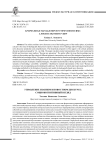
Управление знанием в новостном дискурсе: социокогнитивный взгляд
Статья научная
Новостной дискурс рассматривается в статье как форма конструирования информационной (новостной) картины мира, которая воздействует на модель мира адресата, систему ценностей, убеждений, знаний. В фокусе внимания автора находятся идеологически маркированные способы интерпретации событий как конструирование ситуативных ментальных моделей. Теоретической и методологической базой исследования является социокогнитивная концепция Т.А. ван Дейка о релятивности знания, в соответствии с которой знание имеет прагматическую и дискурсивную основу. Аргументируется взгляд на знание как на разделяемое в эпистемическом сообществе обоснованное мнение. Объектом изучения избраны высказывания с эксплицитными модусами знания и мнения, в которых синтаксическое дефокусирование модусных и диктумных пропозиций обусловливает производство социальных когниций. Определены когнитивно и коммуникативно значимые эпистемические критерии новостного сообщения, которые влияют на интерпретацию реципиентами мнения как знания. В результате анализа дискурсивного конструирования медиасобытия «Russian spy poisoning» («Отравление бывшего шпиона») установлены когнитивные механизмы конструирования идеологизированной ментальной модели новостного события. Материал и методика его изучения, апробированная в статье, могут быть использованы в дальнейших исследованиях коммуникативно-эпистемических характеристик новостного дискурса.
Бесплатно
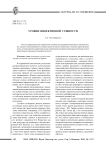
Статья научная
В статье характеризуется современное состояние исследования инвективы в лингвистических студиях. Рассматриваются основные аспекты анализа инвективы с позиции теории речевых ктов, устанавливается корреляция между инвективной лексикой, инвективным речевым актом и нвективным поведением языковой личности.
Бесплатно
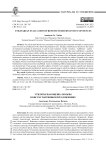
Утилитарная оценка пользы в бисубстантивных предложениях
Статья научная
В статье описаны способы и средства выражения оценки пользы в предложениях, имеющих в предикативном ядре два существительных в сочетании со связкой. Определено место утилитарной оценки в системе оценочных знаний. Представлена шкала такой оценки «полезный - безвредный - безразличный - бесполезный - вредный», обосновано выделение на ней нейтральной зоны, образованной значением ‘безразличный’. Выявлены элементы предложения, в которых обнаруживается утилитарная оценка, и показано, что она выражена преимущественно в связочно-субстантивном сказуемом. Проанализирована и описана структура утилитарной оценки пользы в бисубстантивных предложениях: субъект оценки, субъект пользы или субъект вреда, объект оценки и основание оценки, совпадающее с целью. Мотивировано выделение субъекта вреда. Установлены продуктивные грамматические способы выражения утилитарной оценки пользы в бисубстантивных предложениях. Охарактеризованы случаи совмещения разных видов субъектов в данном типе предложений. Исследованы три группы возможных субъектов пользы: человек (конкретный и абстрактный), группа людей (конкретная и абстрактная), животные как особая группа, в которой субъекты оценки всегда совмещены. Определены возможности сочетаемости утилитарной оценки пользы с другими видами оценки.
Бесплатно
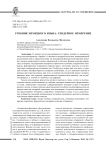
Учебник немецкого языка: гендерное измерение
Статья научная
В данной статье рассматривается учебное пособие по немецкому языку как иностранному «Aspekte 1» в контексте гендерной политики, инициированной социолингвистами и представителями так называемой феминистской критики немецкого языка в конце прошлого века и проводимой по сей день. Данная политика направлена, во-первых, на разрушение гендерных стереотипов в учебных и справочных материалах, формирующих искаженную картину мира у читателей, зачастую не соответствующую современному положению дел. Особую роль играет при этом язык, с помощью которого манифестируются гендерные асимметрии, то есть действиям мужчин и женщин дается разная оценка, при этом, по мнению исследователей данного вопроса, женщине чаще, чем мужчине, приписываются отрицательные качества, она не рассматривается, в отличие от мужчины, как референт. Задача исследования, результаты которого описаны в статье, состоит в лингвистическом анализе использованных в учебнике «гендерно нейтральных» форм немецкого языка, отражающих тенденции к реформированию немецкого языка в гендерном аспекте в целом, а также в анализе представленной в учебном пособии фразеологии на предмет наличия гендерной симметрии или асимметрии. Отдельное внимание уделяется рассмотрению гендерных стереотипов, полоролевых клише, то есть существующих в обществе ожиданий, поведенческих установок, касающихся мужчин и женщин, в различных сферах жизни социума
Бесплатно
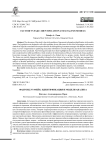
Фактоид vs фейк: идентификация и модели анализа
Статья научная
Актуальность исследования обусловлена обращением к проблеме определения недостоверной информации в медиапространстве. В статье показано, что в российских законодательных актах не содержится терминов, обозначающих такого рода сообщения, а существующие методики лингвистической экспертизы не предлагают инструментов для разграничения недостоверных сообщений, имеющих различную интенциональную основу. Автором охарактеризованы подходы к способам квалифицирования недостоверной информации. Установлены фактообразующие принципы, учет которых позволяет создателю искаженного факта сделать обманчивость незаметной и эффективной и интериоризировать такой факт в сознание массовой аудитории. Предложены критерии разграничения недостоверных сообщений на фактоиды и фейки. Первые представляют собой социально опасную правдоподобную информацию, претендующую на статус реального факта, вторые - сообщения, которые предполагают развлекательно-игровое осмысление и не создают угрозы причинения вреда жизни человека. Разработаны модели лингвистического анализа фактоидов, выполняющих манипулятивную функцию, и фейков, направленных на развлечение аудитории. Особое внимание уделено сообщениям с недостоверной информацией, демонстрирующим признаки фактоида и фейка, целью которых является манипулирование.
Бесплатно
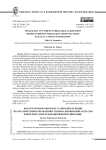
Статья научная
Представленное в статье изучение агрессивного речевого поведения собеседников в рамках интернет-опосредованной коммуникации находится в русле проблем выделения сообщений, которые являются истинно агрессивными: содержащими интенцию нанесения ущерба, в том числе психологического. Особое внимание уделено коммуникации, в которой реакцией на агрессивное действие становится ответное агрессивное действие. Показано, что интенция отвечающего отличается от желания нанести ущерб и определение агрессора усложняется, поскольку по форме ответная реакция схожа с провокативным действием. Для решения задачи выявления истинного агрессора по речевой продукции значимым становится восстановление рамок конкретной коммуникативной ситуации. В фокусе внимания настоящего исследования находится различение наступательной и ответной речевой агрессии, которое позволяет зафиксировать схему взаимодействия коммуникантов при переключении ролей агрессора и жертвы. Представлены результаты изучения вербализации агрессии в сообщениях социальной интернет-сети «ВКонтакте»: реципиенты оценивали стимульный материал вне контекста (сообщений других участников дискуссии), в одном из контекстов (предшествующем или последующем) и в двух контекстах. Установлено, что при определении агрессора значим узкий речевой контекст, окружающий речевое сообщение, а именно наличие предшествующего и последующего контекстов в виде текстовых сообщений, провоцирующих вербализацию оборонительной агрессии.
Бесплатно
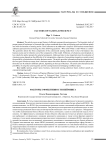
Факторы эффективности нейминга
Статья научная
В статье охарактеризованы факторы обеспечения эффективности процесса коммерческого именования. В результате лингвистического анализа имен собственных бизнес-объектов (ИСБО) г. Воронежа выявлено, что ИСБО, будучи косвенными речевыми актами с интенцией побуждения к действию, оказывают влияние на адресата имплицитно. Оно реализуется посредством актуализации одного из компонентов предложенной нами модели коммерческой номинации «кто-что-кому продает». Обнаружено, что любое наименование бизнес-объекта может быть соотнесено с одним из компонентов модели. Установлено, что эффективность номинации бизнес-объектов обусловлена четкостью речевого представления выбранного для фиксации в названии компонента номинации, а также учетом фактора адресата: показано, что на оценку наименования адресатом влияет затрудненность толкования ИСБО, характер ассоциаций (негативные или позитивные), возможность ассоциации с названиями других бизнес-объектов. Описано соотношение двух видов ИСБО (названий, указывающих на определенную сферу бизнеса, и ИСБО, имеющих широкие возможности применения) и их зависимость от типа бизнес-объектов, а также охарактеризованы возможности применения одной и той же языковой единицы для индивидуализации бизнес-объектов разных типов. Изложенный в статье материал может быть использован специалистами-неймерами при разработке наименований бизнес-объектов.
Бесплатно
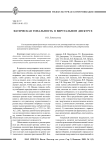
Фатическая тональноcть в виртуальном дискурсе
Статья обзорная
Статья рассматривает фатическую тональность как доминирующий тип тональности виртуального дискурса и анализирует такие ее виды, как игровой, юмористический, доверительный, агрессивный и иронический.
Бесплатно
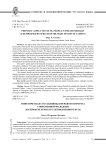
Статья научная
Статья посвящена реконструкции речевого портрета, который определяется как составляющая речевой личности, вербализуемая в процессе коммуникации. Цель исследования - проанализировать лингвистические черты речевого портрета курсанта, реализующиеся на фонетическом уровне. Материал исследования составили диктофонные записи учебного дискурса (240 часов). Установлено, что речевой портрет курсантов гармоничен, хотя требуется незначительная корректировка с точки зрения соблюдения акцентологической и произносительной норм. В речи курсантов выявлены ошибки, типичные для речи современной молодежи. Определено, что особую роль при формировании речевого портрета курсантов играют артикуляция и дикция, их развитие является одним из факторов успешной коммуникации в военной профессиональной сфере. Полученные в результате исследования данные могут стать основой для пересмотра содержания образовательных стандартов по военным специальностям, корректировки содержания лингвистических дисциплин не только в военных учебных заведениях, но и в вузах страны в целом. Описанная фонетическая составляющая речевого портрета курсантов как представителей современной молодежи дополняет имеющиеся сведения об анализируемом феномене, а проведенное исследование вносит вклад в развитие лингводидактики и социолингвистики.
Бесплатно

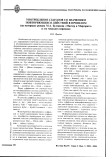
![Урок как интеракция: мультимодальный и дидактический аспекты (рец. на кн.: Unterricht ist interaktion! Analysen zur de-facto-didaktik [text] : [Sammelband] / R. Schmitt (HRSG.) ; HRSG. Vom institut f"ur deutsche sprache. - Mannheim : Amades verl., 2011. - 240 S. - (arbeitspapiere und materialien zur deutschen sprache ; bd. 41)) Урок как интеракция: мультимодальный и дидактический аспекты (рец. на кн.: Unterricht ist interaktion! Analysen zur de-facto-didaktik [text] : [Sammelband] / R. Schmitt (HRSG.) ; HRSG. Vom institut f"ur deutsche sprache. - Mannheim : Amades verl., 2011. - 240 S. - (arbeitspapiere und materialien zur deutschen sprache ; bd. 41))](/file/thumb/14970211/urok-kak-interakcijamultimodalnyj-i-didakticheskij-aspekty-rec-na-kn.png)
